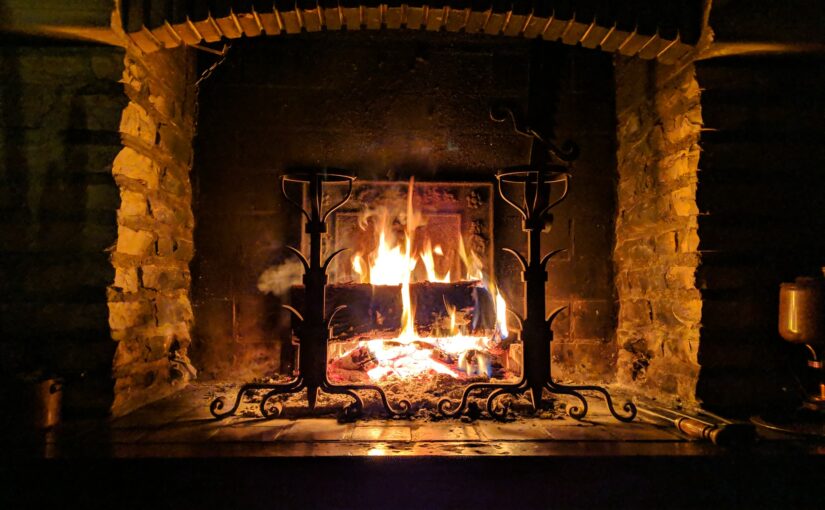Whether gas or wood-burning, fireplaces are a cozy feature representing an epitome of the home for many homeowners. Yet, the masonry joints and brick may start to crack at some point, and this is an early sign that the fireplace is going to ruin. Repairing these cracks in the fireplace can help you save thousands of dollars in future repairs and ensure your family’s safety, as it reduces the possibility of a fire outbreak through the chimney.
Leaving those small cracks unattended during the summer may lead to very large cracks when spring comes knocking, and it becomes more complicated. Letting these large cracks in your outer brick will allow rain, ice, and snow to get inside. The water finds its way through the flashing and the outer brick and may even go farther into the flue, and this causes far more damage.
You can prevent this large damage by repairing the fireplace as soon as you notice it has broken with the following seven steps.
- Tuckpoint the brick mortar
Bricks are held together by mortar, but smooth and solid mortar may become battered due to other elements, and it starts crumbling. Mortar always deteriorates first because brick is harder. Tuckpointing or repointing allows you to scrape out the crumbly part and replace it with new mortar.
You need a joint raker to scrap the weak and loose mortar and leave the good one in place. Then, use a garden hose to spray the brick down and leave it for 30 minutes and allow the roof to dry before continuing work.
Mix up another batch of mortar till it has enough consistency and use a pointing trowel to press it into the cracks to match the existing mortar’s look. Finally, use a tuckpointing tool to smooth the joints down.
- Caulk around the crown and the flue
One way water can enter and cause damage in your home is the point that joins the crown and the chimney flue. Typically, it takes a while for gaps in this area to form, and water that gets to this point flows down through the flue’s sides.
Clean out the debris, such as loose mortar and moss using a wire brush, and fill the gap with a complete caulk bead using a high-heat mortar tube and a caulk gun.
- Patch cracks around the large crown
The crown is the sloping cap at the top of the fireplace. It’s there to protect the masonry and prevent water from staying over the top. When the crown starts to crack, this may give you more problems than those at the vertical section because water, snow, and ice quickly gather inside.
If you have large cracks with a diameter between 1/8 and 1 inch around the crown, you can repair them using a pre-mixed mortar or cement patch. Use a squeeze bottle to inject the crack with your repair mix, or you can use a putty knife to force the repair mix in. Typically, it takes between four and six hours for it to cure, but wider cracks may require a longer time.
- Use a sealant to patch hairline cracks.
Hairline cracks, also known as spider cracks, are not treated the same way as large cracks because the mineral particles inside the mortar or patch are too large, so they can’t fit into the narrow space of the hairline crack. The solution to this problem lies in using a masonry sealer with a highly liquid consistency capable of penetrating through the hairline cracks.
A bonus point is that this product seals up other porous parts of the crown and prevents additional hairline cracks. Scrape off loose particles with the corner of your putty knife but be careful not to enlarge the cracks. Then use a brush to apply the sealer.
- Repair cracked bricks
A caulk gun and high-heat mortar may repair chimney bricks with one or two small cracks. First, use a screwdriver or the edge of the putty knife to clean the crack. Then use a wire brush to sweep clean the crack. Next, squeeze high-heat mortar as far as you can into the crack.
Generally, unless it is a large crack, the mortar is unlikely to extend very far. So, with a glove on your finger, clean the mortar off the crack, and clean the areas surrounding the crack with a rag.
If the cracks on the brick are clean hairline cracks, you can close them up using a masonry sealer and a brush.
- Replace cracked bricks
If the bricks are severely damaged, you should remove and replace them. You can do this carefully without affecting the adjacent bricks. Use a flat-head screwdriver or masonry chisel to chip off the mortar from the bricks slowly. Boreholes through the mortar, with a masonry bit and a drill, speed up this process and reach farther back.
After you loosen the brick, pull it out with your hand and chip off the residual mortar from adjacent bricks with your hand to smoothen it. Butter all the sides of your replacement brick with a small trowel (except the back or front). Then gently push your replacement brick into place. Center it in a way that all the seams have equal width. Take off excess mortar and use a tuckpointing tool to smoothen the joints.
- Check the draught
You can do this by lighting a candle and holding it in front of the fireplace opening. It should draw smoke and flame up the chimney. Otherwise, it means the chimney is not well capped off or blocked.
Conclusion
You may not need all of these steps for all fireplace repair projects. It may just be cursory work for minor damage. However, you must examine the fireplace entirely and carefully to determine the full extent of any damage.
Author Bio

Leon Collier is a blogger and academic writer from the UK who works with essay help online as one of the dissertation writers. He likes trying new subjects and is always focused on proving his worth in new and challenging writing areas. His hobbies are reading books and playing pen and paper games with his friends. You can reach him via Twitter @LeonCollier12.
Photo by Stéphane Juban on Unsplash
